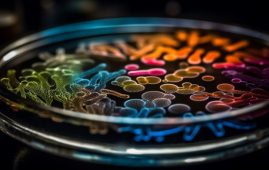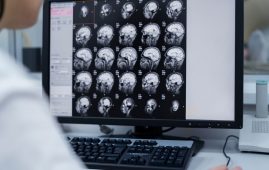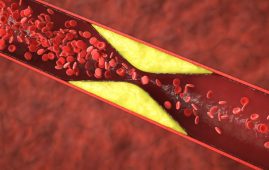

Constrictions in the bowel become painful for people with Crohn’s disease, a chronic inflammatory intestinal condition. These complications cannot be precisely identified to begin targeted therapy due to a lack of methods up until now. A multidisciplinary study team at the Medical University of Vienna has looked into a novel imaging method that could enhance the management of intestinal strictures. Radiology recently released the study’s findings.
Patients with Crohn’s disease, a chronic inflammatory bowel disease that affects more than 20,000 individuals in Austria, frequently experience intestinal strictures. Since these strictures cause cramping discomfort and digestive issues, treatment is almost always necessary.
In contrast to fibrotic narrowing, which is connected to irreversible tissue changes, pure inflammatory strictures react very well to drug therapies and call for surgical intervention. But combinations of fibrosis and inflammation frequently exist in different degrees. There is currently no imaging technique that enables a therapeutically meaningful differentiation between intestinal wall inflammation and fibrosis.
A novel nuclear medicine tracer was used for the first time as part of MedUni Vienna’s interdisciplinary research work at the University Department of Radiology and Nuclear Medicine in the hunt for precise imaging techniques. This so-called FAPI tracer binds particularly to the connective tissue cells’ fibroblast activating protein (FAP), which causes fibrosis in the diseased intestinal wall.
With the help of the new tracer, the diagnostic technique PET-MRI was able to show a strong correlation between molecular imaging and the pathological extent of fibrosis. Even the distinction between mild and severe intestinal wall fibrosis is now feasible, and this influences the choice of therapy.
In the future, the molecular imaging we have developed could be used to identify those patients who would benefit from surgical intervention at an early stage, thereby sparing them the need for less effective drug therapy for fibroid-stenosis,” says co-study leader Michael Bergmann from the Department of Visceral Surgery at MedUni Vienna’s Department of General Surgery, summarizing the great potential of these research findings.
Researchers from the Clinical Institute of Pathology, the Department of Gastroenterology and Hepatology, and the Department of Internal Medicine III all contributed to the research, which was directed by the Department of Radiology and Nuclear Medicine. Currently, larger-scale applications of the new methodology are proposed for follow-up studies. “In this context, we shall examine the course of patients with fibroid-stenosis and possible reversibility under new drug therapies,” says first author Martina Scharitzer (Department of Radiology and Nuclear Medicine).
more recommended stories
 Caffeine and SIDS: A New Prevention Theory
Caffeine and SIDS: A New Prevention TheoryFor the first time in decades,.
 Microbial Metabolites Reveal Health Insights
Microbial Metabolites Reveal Health InsightsThe human body is not just.
 Reelin and Cocaine Addiction: A Breakthrough Study
Reelin and Cocaine Addiction: A Breakthrough StudyA groundbreaking study from the University.
 Preeclampsia and Stroke Risk: Long-Term Effects
Preeclampsia and Stroke Risk: Long-Term EffectsPreeclampsia (PE) – a hypertensive disorder.
 Statins and Depression: No Added Benefit
Statins and Depression: No Added BenefitWhat Are Statins Used For? Statins.
 Azithromycin Resistance Rises After Mass Treatment
Azithromycin Resistance Rises After Mass TreatmentMass drug administration (MDA) of azithromycin.
 Generative AI in Health Campaigns: A Game-Changer
Generative AI in Health Campaigns: A Game-ChangerMass media campaigns have long been.
 Molecular Stress in Aging Neurons Explained
Molecular Stress in Aging Neurons ExplainedAs the population ages, scientists are.
 Higher BMI and Hypothyroidism Risk Study
Higher BMI and Hypothyroidism Risk StudyA major longitudinal study from Canada.
 Therapeutic Plasma Exchange Reduces Biological Age
Therapeutic Plasma Exchange Reduces Biological AgeTherapeutic plasma exchange (TPE), especially when.

Leave a Comment